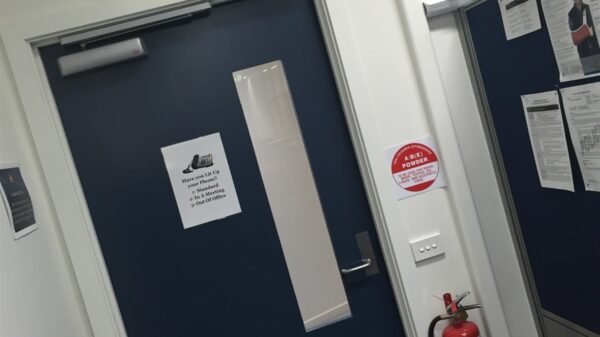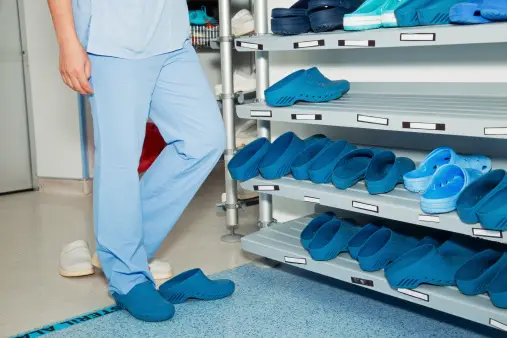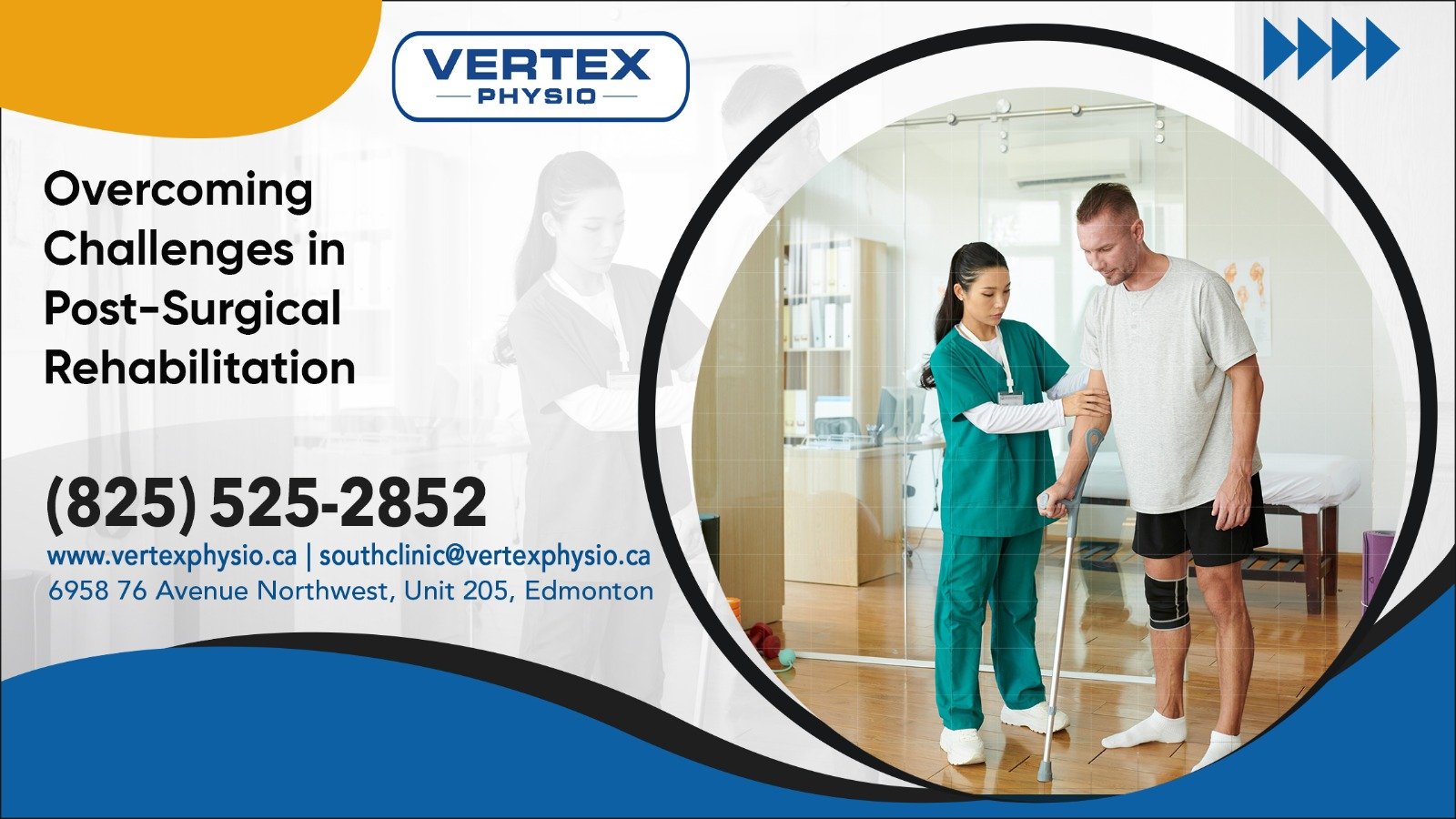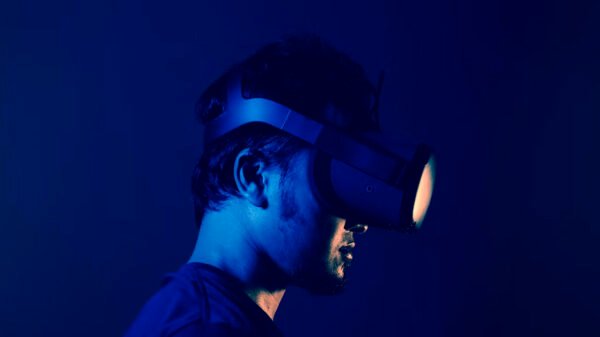Overcoming challenges in post-surgical rehabilitation is a crucial phase in the recovery process for patients following surgery. Tailored post-surgical physiotherapy programs play a vital role in helping individuals regain strength, mobility, and function, ensuring a smooth transition back to daily activities and optimal health.
Post-surgical physiotherapy services in Edmonton are designed to address the unique rehabilitation needs of each patient, employing evidence-based techniques and personalized care plans. Post-surgical rehabilitation encompasses a comprehensive approach, focusing on alleviating pain, restoring physical capabilities, and preventing complications from prolonged inactivity or improper healing. Through dedicated support and specialized interventions, patients can achieve significant improvements in their recovery outcomes, marking post-surgical physiotherapy and rehabilitation as key components of the healing journey.
Managing Patient Pain and Discomfort
- Integrated Pain Relief Methods: Combining pharmacological treatments with physiotherapy techniques like soft tissue mobilization, acupuncture, or transcutaneous electrical nerve stimulation (TENS) offers a synergistic effect that can enhance pain relief. This integrated approach allows for the adjustment of pain management strategies based on individual patient responses and the stage of recovery.
- Educational Workshops: Hosting educational sessions about pain management post-surgery, including how to use prescribed pain medication effectively, the benefits of ice or heat therapy, and the importance of gentle movements, can empower patients to participate in their pain management actively, reducing fear and anxiety associated with post-operative pain.
Enhancing Patient Motivation and Compliance
- Progress Tracking: Utilizing tools and apps that allow patients to track their rehabilitation progress, set reminders for exercises, and visualize their improvements over time can significantly boost motivation. Celebrating milestones, no matter how small, reinforces the value of adherence to the rehabilitation plan.
- Family and Caregiver Involvement: Actively involving family members or caregivers in the rehabilitation process by educating them on the patient’s treatment plan, goals, and ways they can offer support encourages a supportive environment that fosters patient compliance and motivation.
Addressing Limited Mobility Early On
- Individualized Mobility Plans: Creating a personalized mobility plan is crucial in the early stages of post-surgical rehabilitation. These plans start with passive range-of-motion exercises to maintain joint mobility without placing strain on healing tissues. Gradually, as the patient’s condition improves, active exercises are introduced to enhance strength and flexibility. Considering the surgery type and the patient’s pre-surgery fitness levels, the specificity of these plans ensures that rehabilitation efforts are both safe and effective, paving the way for quicker recovery and reduced risk of complications.
- Use of Assistive Devices: Early adoption of assistive devices such as walkers, canes, or crutches is often recommended to ensure patient safety and to encourage early mobilization. These devices provide the necessary support, allowing patients to practice mobility exercises confidently. Early movement facilitated by these aids can prevent complications such as muscle atrophy or deep vein thrombosis (DVT), which are common concerns in post-surgical patients.
Tackling Swelling and Inflammation
- Elevation and Movement Strategies: Educating patients on the importance of limb elevation post-surgery is a simple yet effective strategy to manage swelling. This, combined with gentle movements or exercises, promotes fluid drainage from the affected areas, reducing swelling and speeding up healing.
- Dietary Considerations: Nutrition plays a significant role in managing post-surgical inflammation. Advising patients on incorporating anti-inflammatory foods into their diet, like those rich in omega-3 fatty acids (e.g., salmon, flaxseeds), and maintaining proper hydration can support the body’s natural healing mechanisms, reducing inflammation and promoting recovery.
Facilitating Functional Recovery
- Task-Specific Training: Incorporating task-specific training into rehabilitation programs is essential for ensuring that patients can safely and effectively return to their day-to-day activities and job duties. These exercises mimic real-life tasks, gradually preparing the patient to resume their routine. This approach not only aids physical recovery but also boosts confidence in performing everyday activities.
- Environmental Modifications: Recommending modifications in the home and workplace can significantly reduce the risk of re-injury and enable a more seamless return to everyday activities. Making simple changes, such as reorganizing commonly used items to avoid unnecessary stretching or bending and ensuring clear walkways to prevent falls, can make a substantial difference in functional recovery.
Navigating Psychological Challenges
- Cognitive Behavioral Therapy (CBT): Collaboration with mental health professionals to provide CBT can be invaluable for patients struggling with the emotional and psychological impacts of surgery and the rehabilitation process. CBT helps patients develop healthier coping mechanisms, addressing issues like stress, frustration, and depression, which are common during prolonged recovery periods.
- Relaxation and Breathing Techniques: Teaching patients relaxation and controlled breathing techniques can significantly alleviate stress and pain. These techniques, such as diaphragmatic breathing, guided imagery, and progressive muscle relaxation, promote mental and physical relaxation, aiding overall rehabilitation.
Ensuring Continuity of Care
- Tele-rehabilitation Services: Utilizing telerehabilitation services for remote consultations and therapy sessions can ensure that patients continue to receive professional guidance and support, even when they cannot attend in-person sessions.
- Feedback Mechanisms: Implementing regular feedback mechanisms where patients can communicate their pain levels, difficulties with exercises, or other concerns allows for timely adjustments to treatment plans, ensuring that rehabilitation remains patient-centred and responsive to changing needs.
Pathways to Progress
In summary, the journey through post-surgical rehabilitation is marked by various challenges, yet it is paved with opportunities for substantial recovery and return to function. The specialized post-surgical physiotherapy services in Edmonton, particularly those offered at Vertex Physiotherapy, are indispensable in guiding patients through this critical period. Through individualized treatment plans, expert care, and a commitment to patient-centred approaches, these rehabilitation services ensure that each person can navigate the obstacles of post-surgical recovery with confidence and support.
If you or a loved one are on the path to recovery following surgery, let Vertex Physiotherapy be your partner in overcoming the challenges of post-surgical rehabilitation. Reach out to us today to learn more about how our post-surgical physiotherapy services can support your journey to wellness and enable you to achieve the best possible outcomes.
Contact Vertex Physiotherapy now to begin your rehabilitation journey with the support of our post-surgical physiotherapy experts.
Keywords: post-surgical physiotherapy Edmonton, post-surgical rehabilitation, Vertex physiotherapy




























































